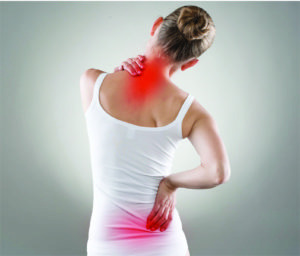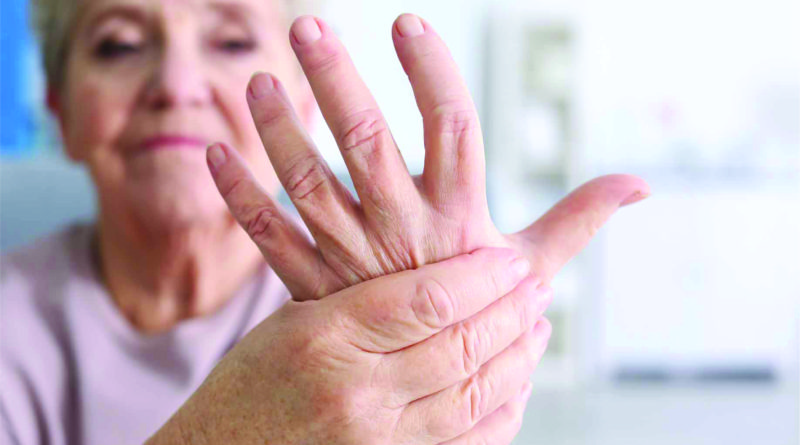Freedom from Pain
Osteoarthritis entails acute joint and musculoskeletal pain. If you are not looking for symptomatic relief but want a complete cure, you can trust the time-tested treatment provided in Ayurveda for the disease
By Ayurvedacharya Dr Partap Chauhan
Joint pain can adversely affect the quality of your life. It not only affects your movements but can have a damaging effect on your social, professional and personal life. Don’t ignore this agonising pain but seek Ayurvedic treatment for complete cure.
 Overview of Arthritis
Overview of Arthritis
There are about 100 types of arthritis, a condition with symptoms that include mild, recurring or acute joint and musculoskeletal pain.
The mainstream healthcare industry is rushing to develop a miracle cure for arthritis and a lot of money has gone into research and development. However, still the focus is on the alleviation of symptoms rather than the cure. Ayurveda, on the other hand, emphasizes on a holistic approach to eradicate arthritis from its roots through a planned implementation of diet, lifestyle and medications.
Osteoarthritis
Osteoarthritis is a degenerative joint disease and one of the oldest and most common types of arthritis. It is characterized by a breakdown of the joint’s cartilage. Cartilage is the part of the joint that cushions the ends of bones. Cartilage breakdown causes bones to rub against each other, causing pain and loss of movement. Osteoarthritis can range from very mild to very severe, and most commonly affects middle-aged and older people. It affects hands and weight-bearing joints such as knees, hips, feet and the back.
Hay fever is characterized by headache, itchy eyes and throat, runny nose with watery discharge and sneezing. Allergies are caused due to hypersensitivity of the nervous system. Ayurveda recommends a long-term boosting of your immunity system to find a permanent cure for this condition.
Causes of Osteoarthritis – Ayurvedic Perspective
According to Ayurveda, osteoarthritis occurs due to aggravation of vatadosha and is known as sandhivata (sandhi means the joint and vata stands for vatadosha). Vata is an Ayurvedic humor that symbolizes air or wind and governs all movements in the body as well as the mind. The condition of Sandhivata is caused when there is increased influence of vata inside the sandhis or joints. Because vata is dry in nature, it absorbs the fluidity from any part of the body. It is also destructive or catabolic in nature, which is why it causes destruction of the cartilages and reduction in the synovial fluid inside the joint capsule.
How Osteoarthritis Starts
Osteoarthritis occurs when the articular cartilage is affected or damaged due to a variety of reasons. It can result due to an injury or ordinary wear and tear. Also, excessive consumption of dry, cold or stale food, irregular sleep, excessive travel, exposure to severe cold and dry weather can cause osteoarthritis.
Osteoarthritis develops in three stages. It starts with the loss of cartilage within the affected joint. In the second stage, the body tries to repair the cartilage but is unsuccessful because there is no direct blood supply to the articular cartilage. Lastly, the bone underneath the cartilage becomes abnormally hardened or thickened causing movement to become very slow and painful.
Symptoms of osteoarthritis
Edema – A condition in which swelling is caused by fluid retention and commonly occurs in the hands, arms, ankles, legs and feet.
Pain in the joints
Tenderness
Stiffness and pain when moving or working
Ayurvedic causes of osteoarthritis
Excessive consumption of dry, cold or stale food
Irregular sleeping habits
Suppressing natural urges
Exposure to severe cold and dry weather
Mental trauma
Diet & Lifestyle advice for dealing with osteoarthritis
Choose foods that are easy to digest and warming in nature.
Excessive use of joints or its underuse can both aggravate joint pain, so, get some exercise each day without overdoing it.
Try exercises that are easy on the joints such as walking, swimming and yoga.
Maintain your weight at an optimum level, neither too overweight nor too underweight.
Do not withhold natural urges (such as burping, urinating, releasing gas, etc.)
Home Remedies
Use warm sesame oil to massage stiff and painful joints in the morning. Massage improves blood circulation and reduces inflammation and stiffness.
Put one teaspoon of fenugreek in a cup of water and set aside overnight. The next morning, mix well and drink.
Prepare ginger tea by boiling 10 to 12 slices of fresh ginger root in two quarts of water for 5 minutes, and then let steep for 10 or 15 more minutes. Drink this tea at a warm temperature throughout the day.
Panchakarma procedures for joint pain
The detoxifying effects of Panchakarma treatments can be effectively used to manage pain. Recommended Panchakarma procedures for joint pain management include vasti (medicated enema), abhyanga (full body massage), potli massage (poultice massage), pizhichil (rich oil massage) and svedana (steam bath).
(The author is Director, Jiva Ayurveda)


